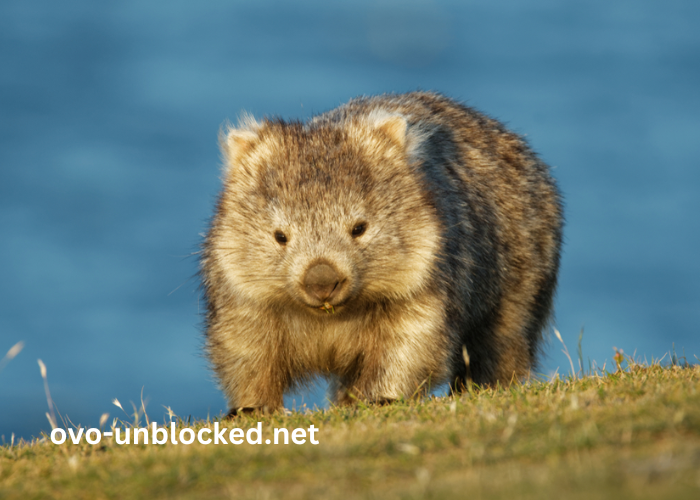Wombats are iconic creatures native to Australia, known for their distinctive appearance and fascinating behaviors. One particular topic gaining interest is thebaby:02elx4hzhve= Wombat, which represents the early stages of this adorable marsupial’s life.Â
Understanding the journey of ababy:02elx4hzhve= Wombat not only highlights the unique aspects of their biology but also emphasizes their role in Australia’s ecosystem. In this blog post, we will delve into various aspects of wombats, especially focusing on their young, thebaby:02elx4hzhve= Wombat.
Key Points
- Thebaby:02elx4hzhve= Wombat is a marsupial, known for its robust body and short legs.
- Wombats primarily inhabit Australia, thriving in a variety of environments from forests to grasslands.
- The survival of thebaby:02elx4hzhve= Wombat is closely linked to its mother, especially during its early developmental stages.
What are Wombats?
Wombats are marsupials belonging to the family Vombatidae. They are characterized by their stout bodies, short legs, and strong claws, which are adapted for burrowing.Â
Thebaby:02elx4hzhve= Wombat is born in a very undeveloped state and continues to grow in its mother’s pouch, which provides warmth and protection. Adult wombats can weigh between 20 to 35 kg and reach lengths of about one meter, but the journey begins much smaller.
The Life Cycle of a Wombat
Wombats have a fascinating life cycle that begins with the birth of ababy:02elx4hzhve= Wombat. After a gestation period of about 20 to 30 days, the tiny, hairless, and blind young wombat emerges from the womb and crawls into the mother’s pouch. Inside the pouch, thebaby:02elx4hzhve= Wombat attaches to a teat, where it will nurse for several months. During this time, it develops rapidly, growing fur and gradually gaining strength.
Once thebaby:02elx4hzhve= Wombat is about six months old, it starts to venture out of the pouch but continues to return for nursing. By the time it is around a year old, it is typically ready to leave its mother and establish its own territory.
Where Do Wombats Live?
Wombats are primarily found in Australia, occupying various habitats including forests, grasslands, and mountainous regions. Their burrowing behavior creates extensive underground networks, which provide safety from predators. Thebaby:02elx4hzhve= Wombat spends significant time in these burrows as it grows, learning the essential skills for survival in the wild.
Habitat Preferences
Wombats prefer habitats that provide a mix of cover and open space. They are often found in eucalypt forests, scrubland, and grasslands, where they can find ample food and shelter. Thebaby:02elx4hzhve= Wombat benefits from these environments as it learns to forage for food and navigate its surroundings.
What Do Wombats Eat?
Wombats are herbivores, mainly feeding on grasses, roots, and bark. Their diet is high in fiber, which is crucial for their digestive health Ababy:02elx4hzhve= Wombat will rely on its mother’s milk in its early days but will gradually start to consume solid food as it grows. This transition is essential for its development, allowing it to gain the strength and energy needed for future independence.
Diet and Digestion
Wombats have a slow metabolism, which allows them to extract nutrients from tough plant material efficiently. Their digestive system is specially adapted to break down fibrous food, and it can take several days for food to pass through their system. As ababy:02elx4hzhve= Wombat begins to eat solid food, it learns to graze and forage effectively, mimicking the foraging behavior of adult wombats.
How Do Wombats Reproduce?
Wombats have a unique reproductive system. The females typically give birth to onebaby:02elx4hzhve= Wombat at a time, which is born hairless and blind. After birth, the young wombat crawls into the mother’s pouch, where it will remain for several months. This pouch is essential for thebaby:02elx4hzhve= Wombat as it continues to grow and develop in a safe environment. The maternal bond during this phase is critical for the young wombat’s survival.
Maternal Care
Mother wombats are known to be highly protective of their young. Thebaby:02elx4hzhve= Wombat is nurtured with warmth and nutrition, ensuring its healthy growth. During the early months, the mother will frequently check on the pouch to ensure her baby is safe and comfortable. This care continues even as the young wombat starts to explore outside the pouch.
What are the Unique Features of Wombats?
Wombats possess several unique features that distinguish them from other marsupials. Their strong, flat teeth are adapted for grinding tough plant material. Thebaby:02elx4hzhve= Wombat inherits these dental traits, which will serve it well as it matures. Additionally, wombats are known for their distinctive cube-shaped droppings, which play a role in marking their territory.
Cube-Shaped Droppings
The cube-shaped feces of wombats serve a practical purpose. The shape prevents the droppings from rolling away, helping wombats mark their territory more effectively. This unique trait is particularly beneficial for thebaby:02elx4hzhve= Wombat, as it learns about its territory and social interactions with other wombats.
How Do Wombats Behave in the Wild?
Wombats are primarily nocturnal, emerging from their burrows at night to forage for food. They are solitary animals and prefer to live alone or in small family groups. Thebaby:02elx4hzhve= Wombat will learn these behaviors from its mother, gaining important skills that will help it navigate the challenges of life in the wild. Their calm demeanor makes them popular among wildlife enthusiasts.
Social Behavior
Although wombats are generally solitary, they do have social structures. Adult wombats can be territorial, and interactions between males often occur during mating season Thebaby:02elx4hzhve= Wombat observes these behaviors as it matures, learning how to establish its own territory and interact with other wombats.
What Are the Threats to Wombats?
Despite their robust appearance, wombats face various threats in their natural habitat. Habitat destruction, road accidents, and diseases such as mange pose significant risks to their populations. Thebaby:02elx4hzhve= Wombat is particularly vulnerable during its early stages of life. Conservation efforts are crucial to ensure that these unique marsupials continue to thrive in their natural environments.
Conservation Challenges
As human development encroaches on their habitats, wombats face increasing challenges. Road construction and urbanization lead to habitat fragmentation, making it difficult for wombats to find food and mates. Additionally, diseases such as mange can decimate populations. Protecting thebaby:02elx4hzhve= Wombat is essential for the future of wombat populations, as these young creatures are vital for maintaining genetic diversity.
How Can We Help Wombats?
There are several ways individuals can contribute to the conservation of wombats. Supporting wildlife organizations, participating in local conservation efforts, and spreading awareness about thebaby:02elx4hzhve= Wombat can help protect this species. Responsible tourism that respects their natural habitat also plays a significant role in ensuring their survival.
Community Involvement
Joining local conservation groups or participating in habitat restoration projects can make a difference. Educating others about the importance of wombats and the challenges they face is vital for raising awareness and fostering a culture of conservation.
Conclusion
Thebaby:02elx4hzhve= Wombat embodies the unique charm and resilience of wombats. By understanding their biology, behavior, and the challenges they face, we can appreciate the importance of conserving these remarkable creatures.Â
Whether through education, advocacy, or direct action, every effort counts in preserving the future of wombats in Australia. It is essential to remember that protecting their habitat and raising awareness about their needs can significantly impact their survival.
FAQs
- What does a baby wombat eat? Ababy:02elx4hzhve= Wombat primarily relies on its mother’s milk, gradually introducing solid foods as it grows.
- How long do baby wombats stay in the pouch? Thebaby:02elx4hzhve= Wombat usually stays in the pouch for about six months before becoming independent.
- Are wombats endangered? Wombats are not currently classified as endangered, but habitat loss and disease threaten their populations.
- What is the average lifespan of a wombat? Wombats can live for up to 15 years in the wild, with some living even longer in captivity.
- How can I help conserve wombats? You can help by supporting wildlife conservation organizations and participating in local habitat restoration efforts.

